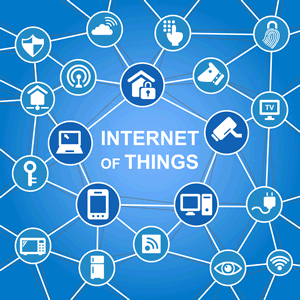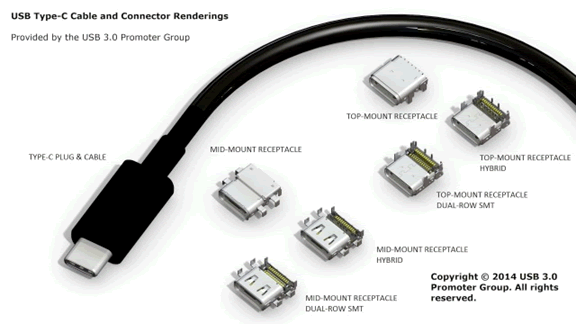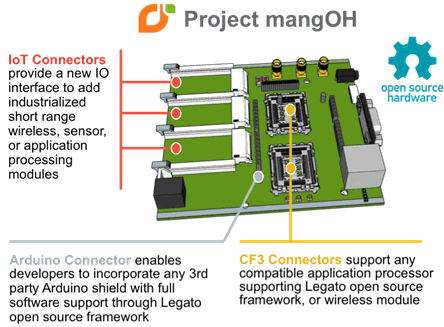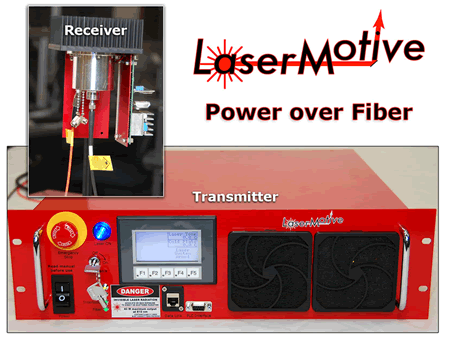Connecting the Internet of Things
Software has come to dominate the conversation about the Cloud, but the Internet of Things won’t work unless data and power can reach the devices involved.
 For all of the hype and promise of the Internet of Things (IoT) and cloud-related services and functionalities, the fact is that nothing works without a proper hardware infrastructure. The most advanced system is only as good as each of the subsystems supporting it. Software has come to dominate the conversation about the Cloud, but none of that works unless the data and power can reach the devices involved.
For all of the hype and promise of the Internet of Things (IoT) and cloud-related services and functionalities, the fact is that nothing works without a proper hardware infrastructure. The most advanced system is only as good as each of the subsystems supporting it. Software has come to dominate the conversation about the Cloud, but none of that works unless the data and power can reach the devices involved.
This connectivity is not only important from device to device; internal circuit connections will never go away, even as they evolve. Every human-machine interface (HMI) in a device must be connected to the device’s circuit board in some manner. Even a monolithic IC has connections between its various blocks.
Of course data can be transmitted without cables, and wireless power transmission generates major industry buzz, but even then the base stations and charging pads involved have hard wiring to attach them to the related energy and data sources required. That WiFi router is still attached to the wall, and that fancy Qi-compatible wireless charger still needs to be connected to the wall at the back end. Those power and signal connections are often forgotten, but they are as critical to system functionality as cloud protocols and the devices’ various operating systems.
Consider the continuing evolution of USB. The explosion of the IoT has created the need for an advanced cable infrastructure for the power- and data-hungry products used to support the cloud functionalities we now demand from our products. The new USB Type-C connector is a direct result of this need, providing both power and signal in an easily usable form factor (see Figure 1).

Figure 1
There’s a Tether Somewhere
Every wireless device must either be tethered to power (using a cable or a wireless pad that has its own cable) or have its batteries constantly replaced, at least until such time that harvested energy can address all portable-device power requirements. Add to that the need to quickly transfer large data files faster and with a lower power expenditure than can be done wirelessly, and it quickly becomes obvious that we will have power and signal cables, and the corresponding connector and PCB infrastructures, into the foreseeable future.
The development and evolution of the USB interface is an excellent example of user demand driving development. The Universal Serial Bus was created in 1994 as a standard connection for communication and charging between computers and electronic devices. Even then it was obvious that a power and signal interconnect would be needed to create part of the final-mile hardware interface for personal computing devices.
This is also the impetus behind the migration of Category 5 computer cables into the current Power-over-Ethernet set of power and signal connection solutions, which originally began by delivering around 15 watts and are now available in versions delivering more than 25 watts. Tethered smart peripheral devices like IP cameras, data-entry kiosks, and security checkpoints all require power to operate and a data pipe for connection to the Cloud. This doesn’t even include independent efforts such as Apple’s 1394 interface (known as FireWire), which was introduced in 1999.
In fact, as the public demands more functionality from its untethered devices, more pressure is put on the tethered peripherals and charging devices that support them. Faster wireless modems, quicker charging, higher-speed downloads, and other advanced high-bandwidth functionalities require a fat pipe for both data and power on the home-station end.
Creating an Ecosystem
The bigger and smarter players already get it, which is why they are part of the efforts that have created the existing infrastructures both together and on their own, as in the case of Apple’s FireWire and Thunderbolt. This effort is gaining momentum as companies once known for their software and processor IP make known their own needs and ideas in the hardware infrastructure space.
The entire open-source hardware movement is a direct result of the demand for powerful remote devices to operate within the IoT, and from Arduino to BeagleBoard to Raspberry Pi, all need hard-cable interconnects as well as their wireless functionality to properly operate. No battery lasts forever, and no wireless link is as cost-effective as a hard-wired connection.
For example, Sierra Wireless, a company known more for its wireless modules and systems than cables and wire, launched Project mangOH with a business-friendly open-source license (Creative Commons Attribution) at the Sierra Wireless Innovation Summit 2015 in Paris (see Figure 2). Designed for market-oriented development, the Eurocard-format system provides industrial-grade quad small form factor pluggable (QSFP+) connectors to receive dongle-like hot-plug boards for an extensible and flexible solution. Such a system would allow you to build an automation/energy/security device compatible with any kind of local network, including WiFi, Bluetooth, Zigbee, Thread, or Dust, using any sensor on these networks.

Figure 2
All of that development doesn’t even touch on optical cables, even though they form a critical infrastructure backbone to the entire internet, the Cloud included. They just aren’t in the spotlight right now because all the attention is on single-line solutions that provide both power and signal to the devices involved.
Technology developments allow optical cable to play in the game as well. Companies like Seattle-based LaserMotive are developing both wireless and fiber-based power delivery systems using lasers to transmit electricity through the air or down a fiber (see Figure 3). NASA even held beamed-power competitions in 2005, 2006, 2007, and 2009 directed at space elevator applications. However, you don’t need blue-sky projects like that to show the promise of what a powered optical fiber or open-air laser link could do as a power and signal connection alternative.

Figure 3
Looking Forward
The bottom line is that no matter how fast, shiny, and powerful the cool new “wireless” devices and services are, they will always need a physical connection at some point for power and data backup and interface. In fact, the faster and more powerful the device is, the greater the demand for a good home-port power-and-signal interface solution.
This article was contributed by freelance writer Louis Edwards.




